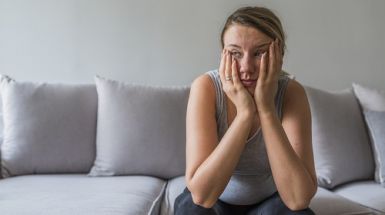Feeling extra tired lately but can’t pinpoint the cause? You might find yourself wondering if your body is low in iron. It’s a common conclusion to jump to and it’s easy to see why – inadequate iron is one the most common nutrient deficiencies in Australia.
Iron is a mineral that we get through a range of animal and plant foods. The body can’t make iron, so it’s essential we get it through our food. Iron’s main role is in red blood cell production. The iron in our blood carries oxygen to all the cells in the body – a very important job!
But – and it’s a BIG but – jumping to conclusions can be hazardous to our health when it comes to iron. If you’ve ever thought about taking iron supplements and haven’t seen your doctor first, you need to keep reading.

How common is iron deficiency?
Iron deficiency is very common, especially in women. It’s estimated that one in four Australian women have low iron levels, compared to one in 30 men.
The main reasons for low iron stores are:
- not eating enough iron-rich foods
- trouble absorbing iron
- blood loss.
The body is pretty good at conserving iron, but we still need a regular supply through our food. When our iron intake is consistently lower than our iron requirements, the body becomes slowly depleted of its stores. Low iron stores can progress to iron deficiency, and then to iron deficiency anaemia.
Who is most at risk of low iron?
Teenage girls and women are particularly prone to low iron levels due to blood losses during menstruation, and higher iron demands during pregnancy. Because of increased losses, women of reproductive age need more than double the amount of iron as men, but are less likely to eat enough iron-rich foods.
Babies and children can be at higher risk of iron deficiency and need consistent sources of iron to support growth. Iron-rich foods are an important first food for babies starting solids.
People who follow vegetarian or vegan diets may be at risk of having low iron, as plant sources of iron are not as easily absorbed by the body as animal sources like meat.
Different medical conditions can reduce the body’s ability to absorb iron (such as coeliac disease) or increase blood losses (including stomach ulcers). Athletes with regular and intensive training programs are also at risk of developing iron deficiency.

Symptoms of iron deficiency
Iron depletion typically happens quite slowly, and as a result you may not notice any symptoms to begin with. Early symptoms can include feeling a little tired or run-down. As low iron progresses to iron deficiency and anaemia, the symptoms can become more noticeable. These can include:
- extreme tiredness and weakness
- shortness of breath
- rapid or irregular heartbeat
- dizziness and feeling light-headed
- headache
- cold hands and feet
- sore or inflamed tongue
- brittle nails
- skin that is paler than usual.
The dangers of self-diagnosing iron deficiency
Even if you have symptoms of iron deficiency, or think your diet is low in iron, it’s important that you don’t self-diagnose iron deficiency or prescribe yourself iron supplements.
That’s because iron deficiency shares many symptoms with the opposite condition – iron overload. Iron overload disorder, also known as hereditary haemochromatosis, is the most common genetic disorder in Australia, affecting one in 200 Australians of northern European heritage.
People with haemochromatosis absorb too much iron from their diet. If unmanaged, it can lead to arthritis, liver damage, and premature death. If a person mistakenly took iron supplements thinking they had low iron, but in fact had haemochromatosis, it could lead to serious issues.
That’s why it’s so important to speak with your doctor before starting any supplements, including iron. Even though supplementsare widely available in supermarkets and pharmacies, they can do more harm than good.
How to find out if you have low iron
The only way to know if you have iron deficiency is through a blood test. A blood test will reveal whether you have low iron, and where you sit on the iron deficiency spectrum. Other tests may be needed to identify whether there is an underlying cause for low iron, such as impaired absorption.
Your doctor may recommend iron supplements if your iron levels are very low, or your requirements are very high. Follow your doctor’s advice about how often you need to take them, and for how long.
Getting more iron through your food intake
Most people can get enough iron by eating a balanced and varied diet that includes foods from the five food groups. If your iron levels are low, it can be useful to look at whether you are eating enough iron-rich foods across the day.

Animal-based food sources of iron are more easily absorbed by our body. These include:
- Red meat, like beef and kangaroo meat
- Offal, particularly liver
- White meat, like chicken and turkey
- Fish
- Eggs
Plant sources of iron include:
- Green vegetables like spinach, silverbeet and broccoli
- Legumes and beans like lentils and kidney beans
- Nuts and seeds
- Grains, including wholegrains and iron-fortified breads and cereals
- Dried fruit, especially apricots.
While these foods are important sources of iron, remember to eat them as part of a balanced and varied diet. Check out HealthDirect’s iron foods infographic with examples on how to add iron-rich foods into your diet.
You can boost your body’s ability to absorb iron by eating important sources of iron alongside sources of vitamin C. Fruits and vegetables are the best sources of vitamin C, particularly if eaten raw. You could add capsicum to your beef stir fry, orange wedges to your chickpea salad, tomato to your breakfast eggs, or strawberries to your bowl of cereal. The combos are endless!
If you’d like help addressing your dietary iron intake, speak with an Accredited Practising Dietitian.

Recent Comments